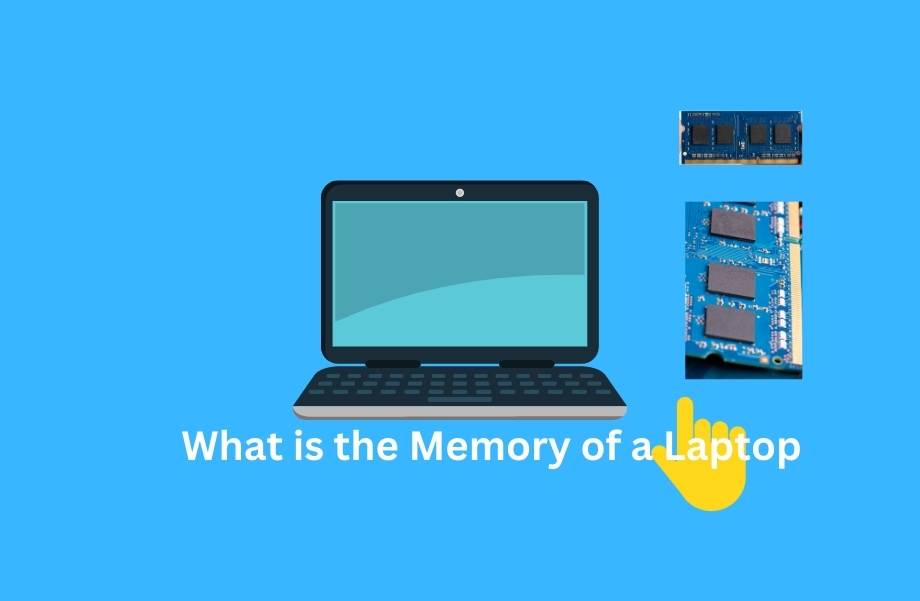Introduction
Laptop memory or Random Access Memory (RAM) is an essential component that plays a crucial role in the overall performance and functionality of our portable computers. It refers to the internal memory storage that enables laptops to store and access processing data quickly and efficiently.
Understanding the various types of laptop memory and their functions is essential for users seeking to optimize their device’s performance. This article aims to provide a complete overview of laptop memory, focusing on the two primary types: Random Access Memory (RAM) and Read-Only Memory (ROM). By checking out their characteristics, functionalities, and significance, you will gain a better understanding of the memory that helps in running laptops efficiently.
Types of Laptop Memory
Laptop memory has two primary types: Random Access Memory (RAM) and Read-Only Memory (ROM). RAM is a volatile form of memory responsible for storing and processing data that the laptop’s processor actively uses during tasks. It allows for quick and efficient data access, directly impacting multitasking capabilities and overall speed.
On the other hand, ROM is a non-volatile memory that retains information even when the laptop is powered off. It stores Firmware, BIOS, and other essential data necessary for booting up the system. These are used to store vital information for the laptop’s smooth running. These ROMs are different from the Hard Disk, which is used to store user data, programs, as well as the operating system’s information.
What is Laptop Memory?
The laptop memory, or Random Access Memory (RAM), is a crucial component of laptop memory that directly influences its performance. It acts as a temporary storage space for data that the laptop’s processor actively uses during operations. When a program is running, relevant data is loaded into RAM for quick access, significantly speeding up the processing time.
Unlike permanent storage devices like hard drives, RAM is volatile. It means that the RAM’s contents are lost when the laptop is powered off. The capacity of RAM determines how much data can be stored and accessed simultaneously, with higher capacities allowing for smoother multitasking and enhanced overall performance.
What is ROM?
Read-Only Memory or ROM, is a type of laptop memory that has a distinct purpose from RAM. Unlike RAM, ROM is non-volatile, meaning it retains data even when the laptop is turned off. It stores critical information that the laptop needs to boot up, such as firmware and BIOS settings. The data stored in ROM is permanent and cannot be modified or erased by typical user actions.
Various types of ROM exist for laptops, such as Programmable ROM (PROM), Erasable Programmable ROM (EPROM), and Electrically Erasable Programmable ROM (EEPROM). These ROMs are used in various parts of the laptop’s motherboard to ensure the smooth functioning of the laptop.
Upgrading Laptop Memory
Upgrading laptop memory can significantly enhance its performance. It will also accommodate the growing computing needs. RAM upgrades involve increasing the capacity of volatile memory, allowing for smoother multitasking and faster data access. Before upgrading, you should consider compatibility factors, such as the type and speed of RAM modules supported by your laptop.
In contrast, ROM upgrades are challenging due to their permanent nature. However, alternative options such as updating firmware or BIOS can modify ROM data. This data is usually upgraded by the laptop manufacturer via OTA or Over-The-Air updates to the laptop. It can also be provided bundled with driver updates. Keeping the BIOS and Firmware data updates avoids any possibility of malware attacks using ROM.
Memory Management and Optimization
Efficient memory management is also crucial for maximizing laptop performance. The Operating System or OS plays a vital role in managing memory resources and allocating RAM for active applications and processes. Virtual memory, a technique that uses a portion of the hard drive as an extension of RAM, also allows for the efficient handling of large data sets.
To optimize laptop memory, users can close unnecessary applications to free up RAM space, clear cache and temporary files that consume memory, and manage startup programs to reduce laptop memory usage during boot-up. These practices help ensure that available memory is utilized efficiently, resulting in improved performance and responsiveness.
Conclusion
Laptop memory is a critical component that greatly impacts the overall performance and functionality of laptops. Understanding the types of memory, such as RAM and ROM, provides insights into how data is stored and accessed in laptops. Upgrading and expanding memory can significantly enhance multitasking capabilities and accommodate growing computing needs.
Effective memory management, including the allocation of resources and optimization techniques, can further optimize laptop performance. By recognizing the importance of memory and implementing appropriate strategies, you can ensure that your laptop operates smoothly, providing faster data access, improved responsiveness, and an overall enhanced computing experience.

